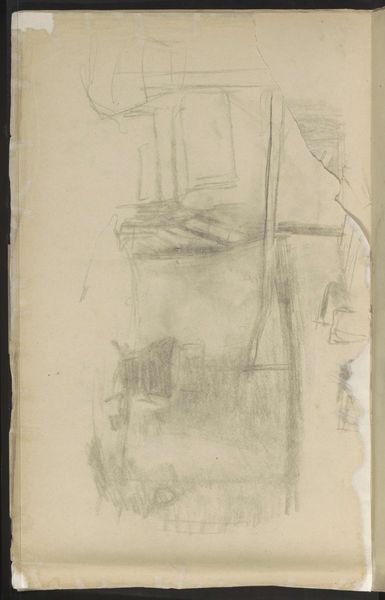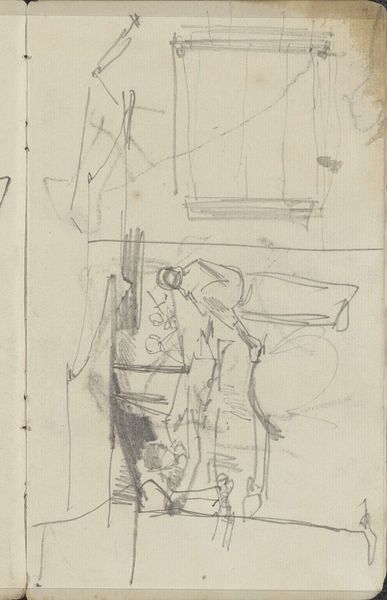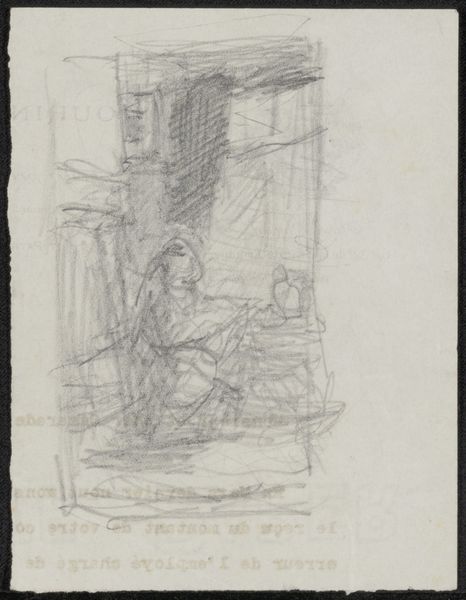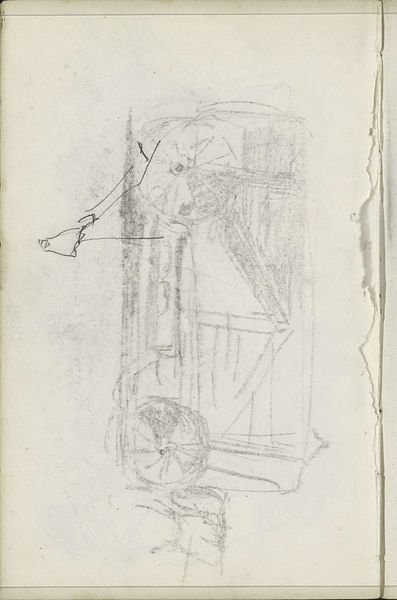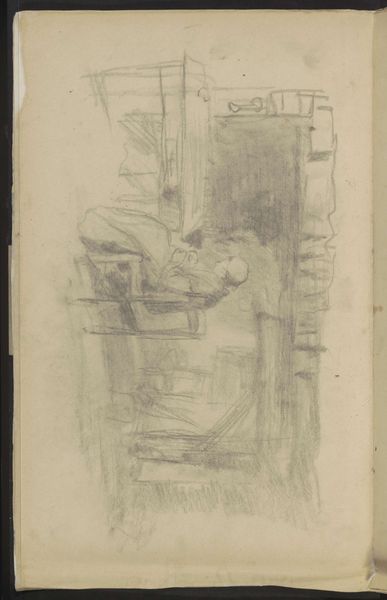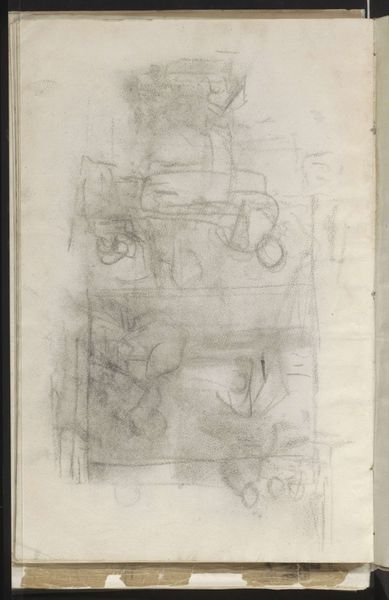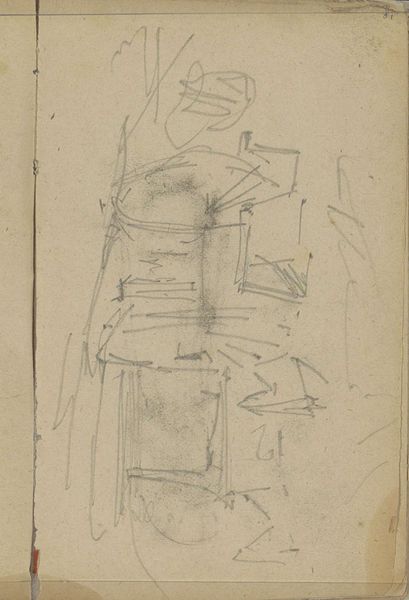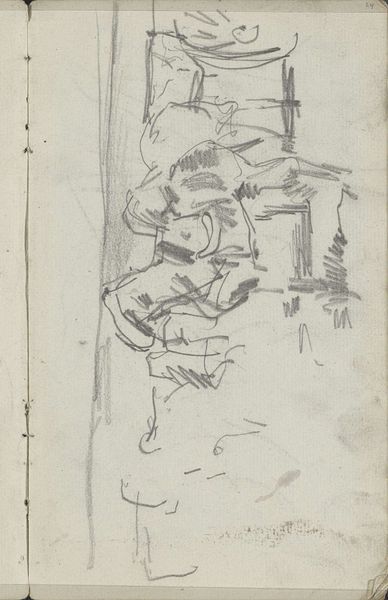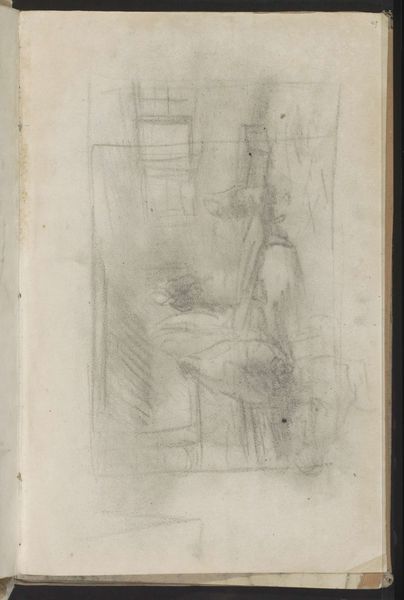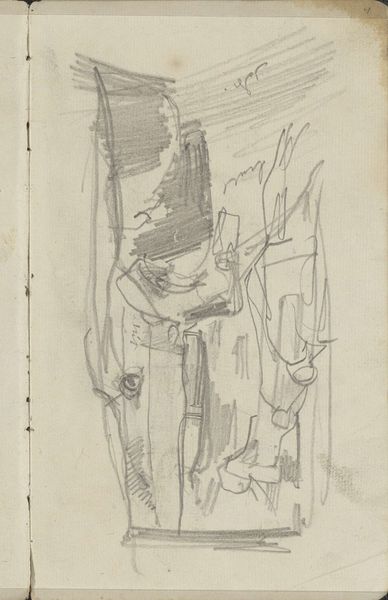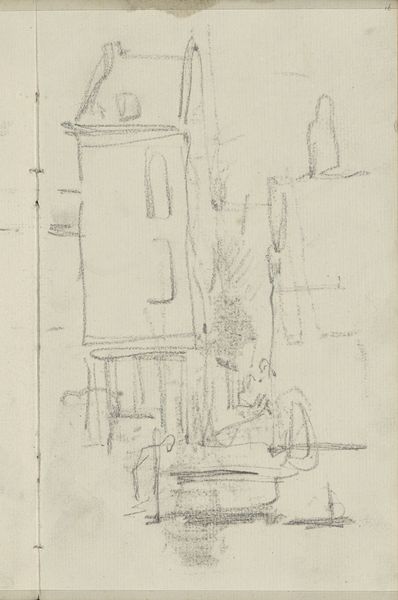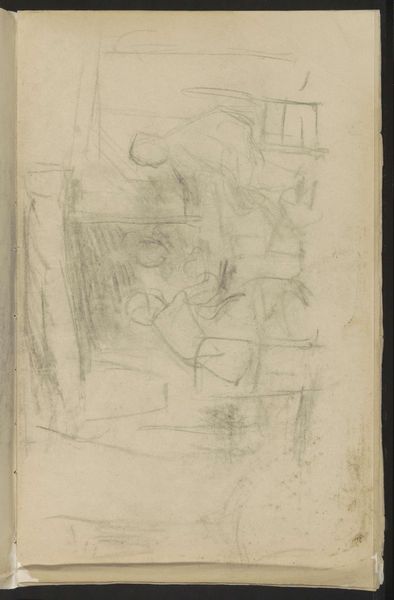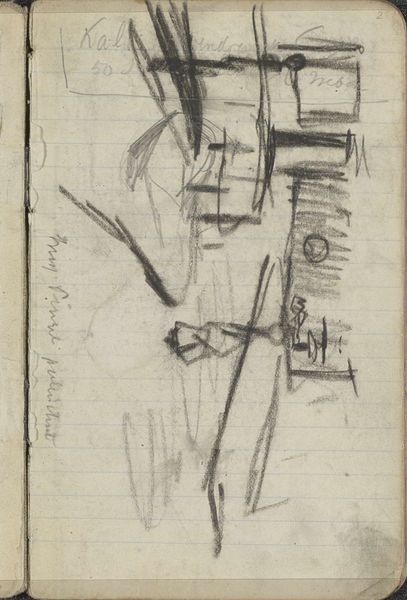
drawing, pencil
#
drawing
#
toned paper
#
light pencil work
#
pencil sketch
#
sketch book
#
incomplete sketchy
#
personal sketchbook
#
sketchwork
#
sketch
#
pen-ink sketch
#
pencil
#
sketchbook drawing
#
genre-painting
#
sketchbook art
#
realism
Copyright: Rijks Museum: Open Domain
Curator: This pencil drawing on toned paper is by Albert Neuhuys and it’s called “Vrouw in een boereninterieur”, or "Woman in a Farm Interior," and it's dated from 1854 to 1914. It's currently held in the collection of the Rijksmuseum. Editor: It's evocative—immediately, a feeling of quiet domesticity emerges, even from the sketchy quality. There's a really subtle yet careful attention paid to the distribution of light and shadow across the form. Curator: Yes, despite being a quick sketch, Neuhuys is clearly observing and documenting the daily life and environment of rural women, something of a symbol for timelessness. Editor: Absolutely, and structurally speaking, it's built on layers and the juxtaposition of hard architectural elements versus soft organic shapes. Notice how he creates depth without relying on traditional linear perspective. It gives it this almost dreamlike haziness. Curator: I see it representing something deeper. Perhaps it conveys a cultural memory tied to agricultural traditions and gender roles. This type of image was especially resonant as the Netherlands modernized, maybe symbolizing nostalgia for the past. Editor: That cultural memory is compelling. Considering the limitations of a simple pencil sketch, his ability to evoke a sense of place and social context through light and composition is technically masterful, it goes beyond a mere illustration. Curator: It's true; the symbolism and Realist style work together beautifully, suggesting how artistic observation helped shape national identity, by visually linking people and labor. The material limitation emphasizes human observation. Editor: I'm still so drawn to the pencil strokes themselves. They lack pretension, and it emphasizes this study as process: seeing, experiencing, marking—each stroke becomes part of the embodied meaning. This piece emphasizes a lived time versus a moment in time. Curator: I agree. Delving into Albert Neuhuys’ piece certainly reminds us that even what appears as a fleeting sketch may encapsulate deeper cultural significance and memory. Editor: And a lesson in how much atmosphere can be coaxed from a single, humble pencil! It all builds up a wonderful sense of quiet, lived reality.
Comments
No comments
Be the first to comment and join the conversation on the ultimate creative platform.
